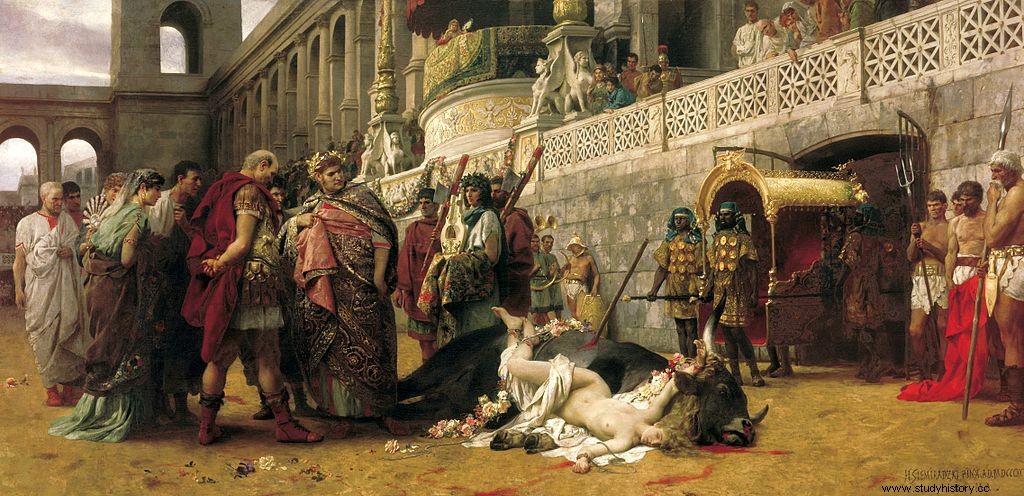Under the reign of Nero (from 54 to 68) the Roman Empire, strong and powerful, was at its peak. The emperor wishes to rebuild Rome in order to give it the splendor it deserves. Also, when the great fire of Rome broke out in 64, not far from the Circus Maximus, many people suspected Nero himself. To calm the citizens, this one suggests that it was the Christians who started it. The crowd had to be appeased because this enormous fire, which burned from July 19 to 24, 64, then flared up again for three days, ravaged practically all of Rome (10 of the 14 districts) and caused thousands of deaths. The practice of the Christian religion being prohibited (these believers of Jewish origin had already been driven out by Tiberius in the year 19, and by Claudius in 41), the culprits, of whom the Roman world was wary because they did not honor their gods, are all found.
64 BC

Characters
Nero
Procedure
Fearing the anger of the crowd and that his popularity would waver, Nero, aware of the tragedy of the fire, ordered, in -64, to capture many Christians to whom he attributed the disaster. The tortures inflicted on these believers are such that they deeply mark the spirits and in particular Tacitus (historian and Roman senator) who recounts the event. Indeed, several hundred Christians (about 300) are delivered to the beasts to be devoured, others are coated with resin and set on fire alive, or else crucified. This fact "officially" confirms the first persecution of Christians, which was renamed the "persecution of Nero". The disciples of Christ, Paul and Peter are among the victims of this emperor who was said to be mad:the first was beheaded and the second was crucified upside down.
Consequences
With this first official persecution, ordered by a Roman head of state, Nero paved the way for Christian martyrs. Indeed, following this tragic event, many waves of persecution followed over the centuries, under the reigns of Domitian, Trajan, Marcus Aurelius, Septimius Severus, Maximinus the Thracian, Valerian, Aurelian and which continued until 'to the Emperor Diocletian (311). The conversion of Emperor Constantine led to the signing of the Edict of Milan, in 313, which therefore authorized freedom of worship.
